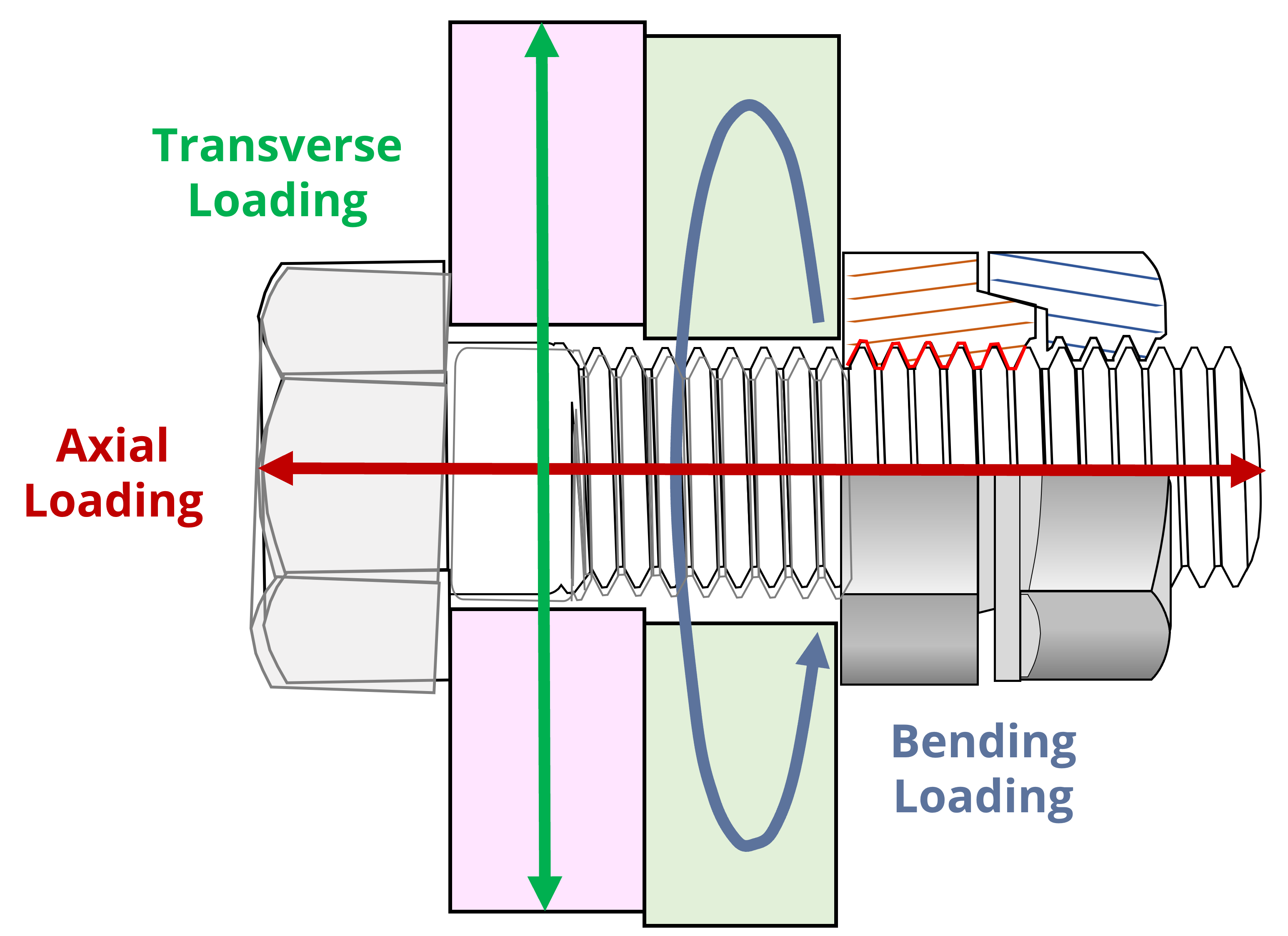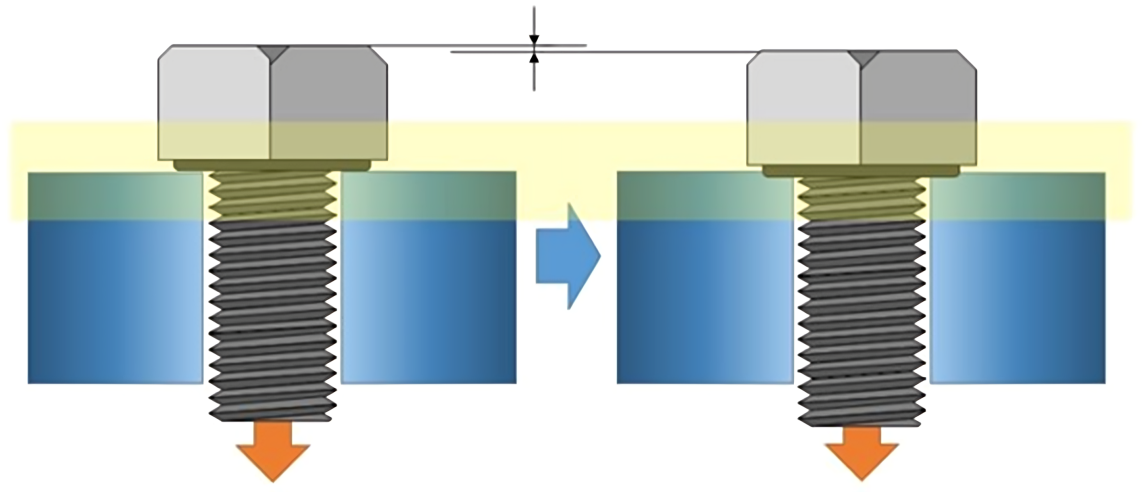Why do Bolts Come Loose? Factors Influencing Loss of Preload
When a bolted joint becomes loose, it is due to a reduction in the tension applied to a bolt during installation. This tension is referred to as ‘preload’. Preload generates a clamping force essential for securing the joint. Preload may decrease for various reasons, resulting in loosening.
Types of Loosening

There are two primary types of loosening that can occur in bolted joints: ‘rotational loosening’, often referred to as ‘spontaneous bolt loosening’ and ‘non-rotational loosening’, also often referred to as ‘slackening’. In joints that comprise of a bolt and nut, rotational loosening occurs when the nut rotates relative to the bolt, while non-rotational loosening occurs when the nut does not rotate relative to the bolt.
Rotational Loosening

Cyclic Axial Loading
‘Cyclic axial loading’ refers to repetitive loads applied to the bolt along its axial direction.
Cyclic Bending Loading
‘Cyclic bending loading’ refers to when repetitive loads cause the bolt to bend. While relatively uncommon, this loading pattern can be encountered in applications involving rotating equipment.
Cyclic Transverse Loading
‘Cyclic transverse loading’ describes repetitive loads applied perpendicular to the bolt’s axis. Transverse loads pose significant risks to bolted joints, often resulting in loosening.
Non-rotational Loosening
The following are six common non-rotational loosening mechanisms that lead to loss of preload:
Damage to Joint Finish
When the finish or paint on a joint surface deteriorates post-installation, it may result in space forming beneath the nut or bolt head, diminishing preload.
Differential Thermal Expansion
When fastener components, such as bolts, nuts, washers, and the joint, are made of different materials, they may exhibit varying coefficients of thermal expansion. Consequently, during significant temperature changes, these materials will expand and contract at different rates. This difference can potentially lead to damage to the fasteners and joint surfaces, ultimately resulting in a decrease in preload.
Embedding

‘Embedding’ refers to localised plastic deformation occurring beneath the bolt head, at the nut bearing surface, within the threads, and on the joint surfaces. This plastic flattening of asperities in these regions creates space, ultimately leading to a loss of preload.
Excessive Bearing Stress

‘Excessive bearing stress’ arises when the stress applied by the clamp load is too high, leading to surface collapse and consequently reducing preload.
Gasket Creep
Creep is the characteristic of a material to plastically deform or permanently deform under continuous stress.
A common form of creep encountered in a bolted joint is ‘gasket creep’. Gaskets found in pipe flange joints, are especially susceptible to creep.
Stress Relaxation
‘Stress relaxation’ is a form of creep and occurs when stress or tension within a bolt gradually decreases over time, typically at elevated temperatures. As this stress or tension dissipates, there is a consequent reduction in preload.
Dangers of Low Preload

When a bolt’s preload decreases, the number of cycles until bolt fatigue failure is reduced. This reduction is attributed to the increased ratio of external force that the bolt bears.
The HARDLOCK Nut (HLN) features an internal wedge mechanism designed to securely lock its threads onto those of the bolt. This can effectively prevent preload loss resulting from both rotational and non-rotational loosening mechanisms.
 Chinese
Chinese Korean
Korean Japanese
Japanese